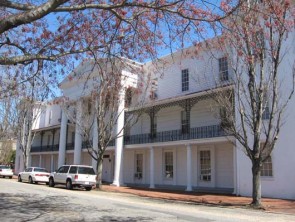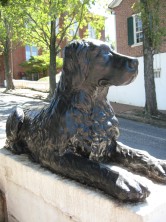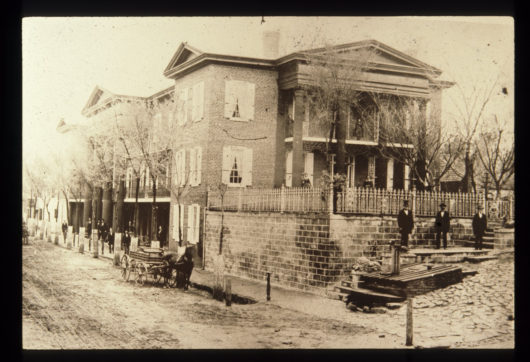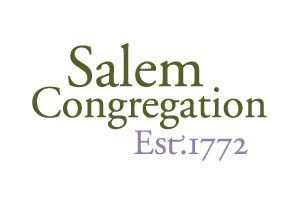Belo House

The Belo House, located at 455 South Main Street in the Old Salem National Historic Landmark District, is a multi-unit residential facility. Edward Belo built this as both a large mercantile store, as well as housing for his family and the employees. Following Edward’s death, his second son Robert who inherited the building in 1883 briefly operated it as a hotel, then as a boarding house. For a while he even operated the Salem Post Office in part of the building. The Belo Home was formally established on June 5, 1899. Edward’s eldest son Alfred, a former Confederate Colonel that fought at Gettysburg and fled to Texas after the war, became the publisher of two major newspapers. He purchased the lot from his brother’s family for it to be set aside in their parent’s memory for the purpose of providing housing to persons who are “. . . aged, of limited means, handicapped, disabled, or orphaned.” Initially the Belo House was managed by the Belo Home Association, a private, not-for-profit corporation. In 1953, the Association dissolved itself and gave the property to Salem Congregation to operate the apartment under the same conditions. That use continues today.
 The two brick end sections and connecting middle wood section of the home were started in 1849. In 1859 the third story in the middle section and front giant portico was added. One of Edward’s interests was ironwork, which is evident in the current building. Trained as a cabinetmaker, when he was about twenty he moved to Philadelphia for five years, where it is believed he learned carving of ironwork molds, which were made in wood to be pressed into sand for casting the iron. After returning to Salem he apparently imported iron work from Wood and Perot in Philadelphia (such as the animals on the Bank Street side, as well as some of the other decorative iron work). But his own local ironworks also appeared to produce decorative fencing and railings. One fence post mold was even found in the basement. The eagle fence posts in front, of which a handful survive, may also be his own work. One iron fountain in the historic district was thought to be procured by him from the same Philadelphia firm, but others appear to have been fabricated locally in his ironworks. Remnants of one is behind Cedarhryst (directly behind on Church Street) and other two are on Salem College Campus, one of which originally was set in the middle of Salem Square.
The two brick end sections and connecting middle wood section of the home were started in 1849. In 1859 the third story in the middle section and front giant portico was added. One of Edward’s interests was ironwork, which is evident in the current building. Trained as a cabinetmaker, when he was about twenty he moved to Philadelphia for five years, where it is believed he learned carving of ironwork molds, which were made in wood to be pressed into sand for casting the iron. After returning to Salem he apparently imported iron work from Wood and Perot in Philadelphia (such as the animals on the Bank Street side, as well as some of the other decorative iron work). But his own local ironworks also appeared to produce decorative fencing and railings. One fence post mold was even found in the basement. The eagle fence posts in front, of which a handful survive, may also be his own work. One iron fountain in the historic district was thought to be procured by him from the same Philadelphia firm, but others appear to have been fabricated locally in his ironworks. Remnants of one is behind Cedarhryst (directly behind on Church Street) and other two are on Salem College Campus, one of which originally was set in the middle of Salem Square.
Edward Belo also had a keen interest in flower gardening, as seen in historic photographs of his garden and greenhouse to the rear. The Wachovia Gardens currently maintains the rear gardens where they grow produce that is donated to local food banks.
The building exterior is largely unchanged as one of the most noted examples of Greek Revival in North Carolina. In 1960, Salem Congregation undertook major renovations of the interior to create separate apartments, until this time there were shared facilities. The new residents that moved into the newly renovated building included women who lived in the church-supported ‘Widow’s House’ at the Single Brother’s House, which Old Salem wanted to restore for museum purposes.
Currently, the facility has twenty nine residential units consisting of both single bedroom and studio apartments.

